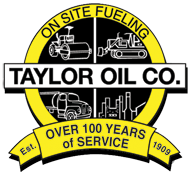Maintaining On-Site Fuel Tanks – Maintenance of your on-site fuel tanks isn’t rocket science, but you should be prepared to follow all local, state and federal laws completely. By keeping your own fuel on your own site, you can experience many benefits, especially for those who have a large heavy-equipment fleet. Plus, you can save money on buying in bulk and you never have to wait on delivery from someone else.
However, dispensing your own fuel also comes with many responsibilities. First and foremost, you have to keep it clean — free from water and contaminants. Most companies like yours will use up their fuel before any water or microbial contamination can infiltrate the tanks, but you do have to worry about this if you’re storing your fuel over the long term.
ASTs
First, use above ground storage tanks (ASTs). These are easily inspected and painted, with less likelihood of leaks and increased ability to safely relocate the tanks elsewhere on your property if needed.
Disadvantages to ASTs are the likelihood of vehicles backing into them, trespassers stealing fuel and vandals defacing them. They’re also more likely to be damaged from high winds, flooding and other natural disasters. In addition, you introduce the potential for soil and groundwater pollution due to leaks.
The Law
You should know the federal, state and local laws backwards and forwards. That’s because those laws can be very restrictive, particularly when it comes to adhering to zoning regulations.
Follow these tips:
- Designate any outdoor use tanks with Underwriters Listed (UL).
- Never use indoor basement tanks outside.
- Fire-guard or vault tanks containing flammable liquids to prevent fuel ignition for two hours in the event of a fire.
- If the flash point is greater than 100-degrees Fahrenheit on your diesel fuel tanks, you don’t need to carry a two-hour fire rating.
- A “secondary containment” area should be able to hold the contents of the primary tank in the event of failure.
- Double-walled tanks, dikes and “bathtubs” meet secondary containment requirements.
- Limit fill-ups to once a month, with tanks filled to no more than 95% capacity to allow room for expansion.
Contamination and Monitoring
Be sure to manage the quality of the fuel going into your tanks, taking preventive measures by applying regular treatments. Such treatments will keep corrosion, gelling and plugging at bay. Work closely with your fuel supplier to keep all deliveries clean.
Testing and Cleaning
Take regular samples with a kit or sample extraction method. Send to a lab to be analyzed further if need be.
When cleaning your tank, use an electric pump with PVC pipe to extract the water from the bottom. It’s wise to use a clear hose so you can tell when all water has been drained. Shut the pump off when done.
Training and Risk Management
Proper risk management when it comes to aboveground storage tanks is critical. All personnel working around the equipment or fuel storage locations must be trained in the identification and elimination of risks. In addition, they should be trained on how to conduct inspections of fuel storage containers, how to dispense fuel and how to operate pump shut-offs.
Employees should be trained in spill contamination, cleanup and safe equipment operation. Schedule annual reviews in regards to fuel operation and outline what you can do to minimize or prevent spills.
For more tips on how to maintain your on-site fueling equipment, call Taylor Oil today.


